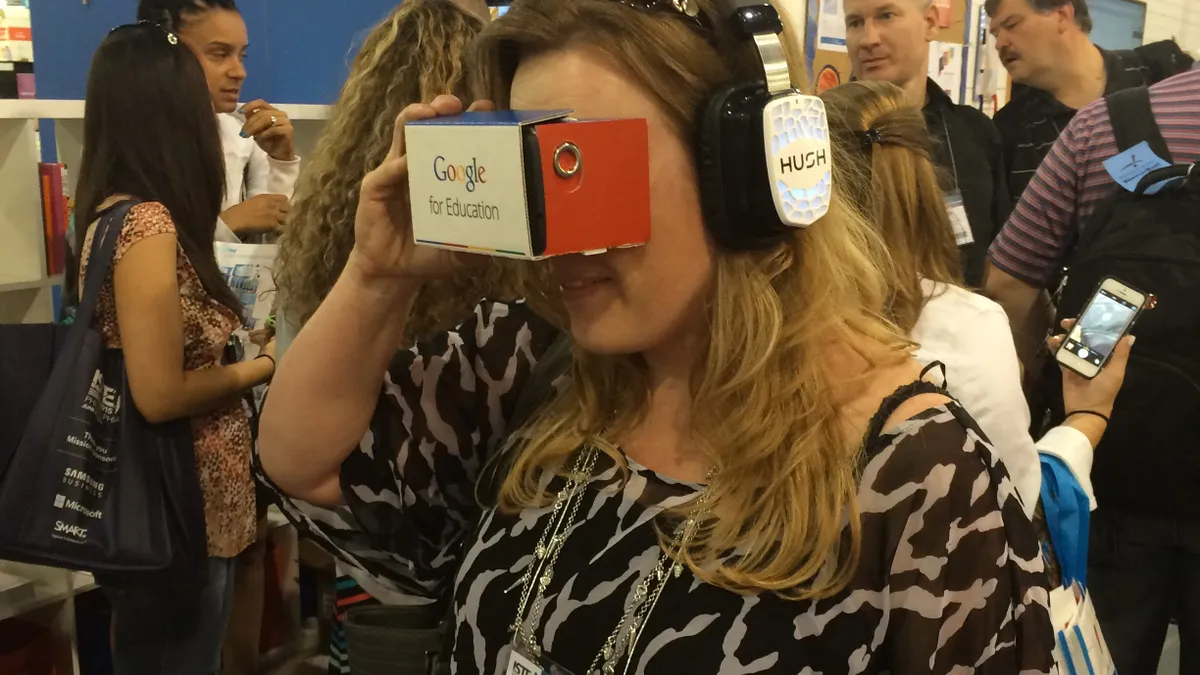Dive Brief:
- Schools are beginning to pilot Google’s new virtual reality simulator Cardboard, which allows students and classrooms to explore foreign and domestic landmarks like the Great Wall of China or Yosemite's El Capitan.
- Google engineers have also begun to envision using the tool to give students virtual college tours or allow them to virtually shadow various professions.
- The system is currently offered free to schools, but the company says it may charge for it in the future.
Dive Insight:
At the moment, Cardboard is part of the suite of apps Google currently offers for educators’ use and should help get its foot further in the door in the ed tech world. It’s not the first tool to allow students to get a virtual glimpse of another part of the world — teachers have been using tools like Periscope and Skype to connect students to new, otherwise inaccessible experiences — but it is among the most immersive.
It’s also well-designed and easy to use. Earlier this year, Education Dive featured the tool as one of the most innovative we had a chance to see at the International Society for Technology in Education (ISTE) Conference in Philadelphia. Cardboard doesn’t just allow resource-restricted schools to open otherwise unavailable doors for students — it also allows them to experience things that aren’t available any other way, like flying through space.






 Dive Awards
Dive Awards







